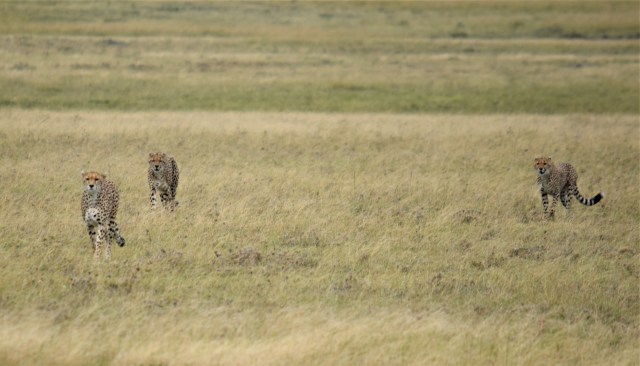One of the things that most people look forward to when going on safari in Eastern Africa is seeing all of the big cats like lions, leopards, and cheetahs. We certainly weren’t disappointed with our encounters as we had several that were all amazing and different in many ways. Whether watching the lion cubs at play, seeing a leopard climbing up a tree, or having a cheetah jump on the hood of our Land Cruiser, seeing these animals up close was something truly special. We saw lions at almost every park that we visited, but the leopards and cheetahs were more rare to see. We know that we were very fortunate to see the amazing variety of cats, including the caracal cat, which not everyone gets to see.





Cats have very expressive faces and keen eyesight and they definitely kept their eyes on us as we watched them from our vehicle. Regardless of the species of cat, one thing that they all had in common was how they ignored people and their vehicles with the exception of the encounter of the cheetah who definitely was not afraid of our presence. We visited the parks during the lion’s mating season and one of the more unique things that we saw during our safari was actually a lion and lioness mating. We also saw a leopard eating a gazelle as well as a pride of lions eating the remains of some sort of antelope. When on safari, you are in their environment and the animals are going to go about their lives regardless of the visitors that may come along to watch them.





It is hard to decide which of the big cats was our favorite to see during our time, but there is no denying how impressive it is to see a large male lion within arms reach of the vehicle. We had many different encounters with male lions including one that was lying right on the edge of the road. We moved very slowly without sudden movements and spoke in low hushes as instructed by our guide so as not to provoke the lion. We were literally so close to him that we could almost feel his breath as he panted in the warm sun and kept a wary eye on us as we snapped photographs. For the first twenty minutes we were the only vehicle and as other vehicles arrived having been notified by our guide, the lion took offense, growled at us and for a moment there was a sense of fear that he might retaliate against us, but then wandered off into the tall grass before the others had the chance to see his power and beauty.





There certainly isn’t any single animal that could be the considered the most important to see during a safari, but certainly seeing the big cats is a highlight. We took so many photographs during our trip that it is difficult to narrow down our favorites. Seeing how affectionate and playful they were was something truly spectacular. They definitely displayed a variety of emotion and caring for one another whether brushing against each other, wrestling with one another, or the lionesses cleaning the young cubs by licking them with their tongues. Although photographs can’t truly provide the same experience as being there, hopefully these images will give you a sense of what it is like to see these magnificent cats in the wild.























